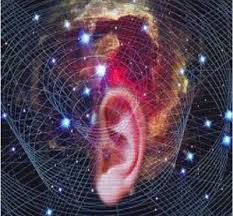Within our biological experience, however, plant, mineral, animal, and human consciousness intersect. They encounter each other. In the language of the self that we speak, these encounters are like the implied pauses in our verbal language. These other kinds of consciousness then form inner rhythms upon which we superimpose our own.
These encounters of consciousness go on constantly. They form their own kind of adjacent identities. We would call them subspecies of consciousness, perhaps, but they are really identities that operate in a trans-species fashion.
If we “read ourselves” sideways in such a manner, we would discover portions of our own consciousness stretching out across the entire fabric of the earth as we understand it — becoming a part of the earth’s material, even as those materials become part of the self that we recognize. Our consciousness would be far less hemmed in. Time would expand adjacently. We think of ourselves physically as “top dogs,” however, separate from the other species and kinds of life, so that in effect we limit our own experience of our psyche.
If we thought or felt in such a fashion, then we would appreciate the fact that biologically our body is ours by virtue of the mineral, plant and animal life from which it gains its sustenance. We would not feel imprisoned as we often do within one corporal form, for we would understand that the body itself maintains its relative stability because of its constant give-and-take with the materials of the earth that are themselves possessed of consciousness.
We could to some extent feel our body coming together and dispersing constantly, and understand how we hover within it without fearing our own annihilation upon its dismantlement.
When we ask: “Who am I?” we are trying to read oneself as if we were a simple sentence that we recognize is only one of many probable variations. Us and no other choose which experiences we want to actualize. We do this as spontaneously as we speak words. We take it for granted that a sentence begun will be finished. We are in the midst of speaking ourselves. The speaking, which is our life, seems to happen by itself, since we are not aware of keeping oneself alive. Our heart beats whether or not we understand anatomy.
We read oneself in too-narrow terms. Much of the pain connected with serious illness and death results because we have no faith in our own continuing reality. We fight pain because we have not learned to transcend it, or rather use it. We do not trust the natural consciousness of the body, so that when its ends nears — and such an end is inevitable — we do not trust the signals that the body gives, that are meant to free us.
Certain kinds of pain automatically eject consciousness from the body. Such pain cannot be verbalized, for it is a mixture of pain pleasure, a tearing free, and it automatically brings about an almost exhilarating release of consciousness. Such pain is also very brief. Under our present system, however, drugs are usually administered, in which case pain is somewhat minimized, but prolonged — not triggering the natural release mechanisms.
If we read our selves adjacently, we would build up confidence in the body, and in those cooperative consciousnesses that form it. We would have an intimate awareness of the body’s healing processes also. We would not fear death as annihilation, and would feel our own consciousness gently disentangle itself from those others that so graciously couched it.
